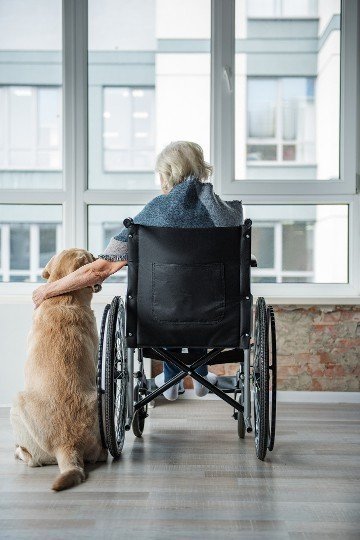
December 12, 2022
As people age, many prefer to stay in their own homes rather than move to assisted living or nursing homes. This trend, called aging in place, can provide many benefits to seniors, such as maintaining independence, familiar surroundings, and connections to their communities. However, there are also some risks associated with aging in place, particularly when it comes to falls. Falls are the leading cause of injury among older adults, and can have serious consequences, such as hip fractures, head injuries, and reduced mobility.
One way to reduce the risk of falls for seniors who age in place is by picking an appropriate pet for companionship. Pets can provide emotional support, reduce stress, and encourage physical activity, all of which can help prevent falls. However, not all pets are suitable for all seniors, and it’s important to consider factors such as the senior’s physical abilities, lifestyle, and living situation when choosing a pet.
For example, seniors who have limited mobility or who use mobility aids may prefer a smaller pet that doesn’t require a lot of exercise, such as a lap dog or a cat. Seniors who are more active and have a yard or outdoor space may prefer a larger dog that can accompany them on walks or hikes. Seniors who live in apartments or have limited space may prefer a smaller pet, such as a hamster or a bird.
It’s also important to consider the senior’s ability to care for a pet. Some pets require more attention and care than others, such as daily walks, grooming, and vet visits. Seniors who have difficulty with these tasks may prefer a low-maintenance pet, such as a fish or a turtle.
In addition to choosing an appropriate pet, there are other measures seniors can take to prevent falls when aging in place. These include:
- Removing tripping hazards, such as loose rugs, clutter, and electrical cords
- Installing grab bars and handrails in bathrooms and stairways
- Improving lighting throughout the home, particularly in areas where seniors spend a lot of time
- Using assistive devices, such as canes or walkers, if needed
- Participating in regular exercise programs, such as yoga or tai chi, to improve strength and balance
By taking these steps and choosing an appropriate pet, seniors can age in place safely and enjoy the benefits of companionship and independence.